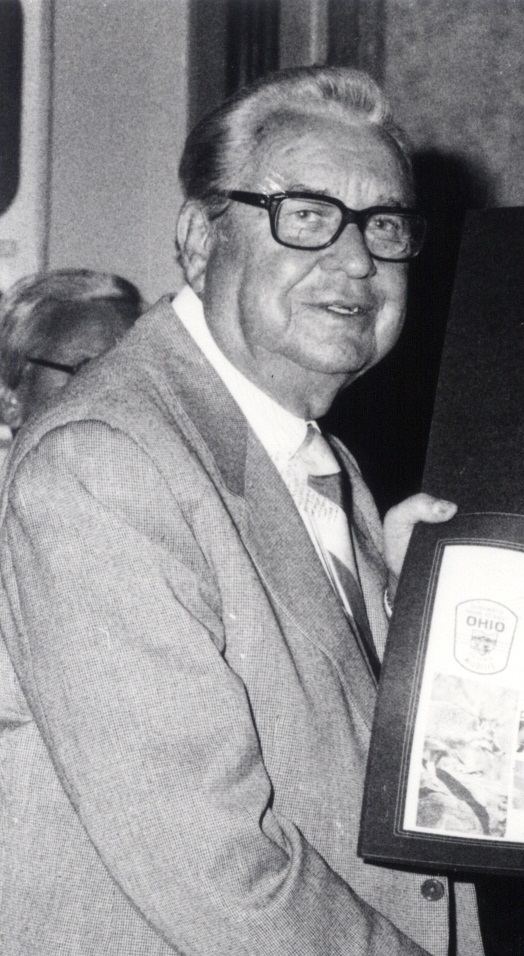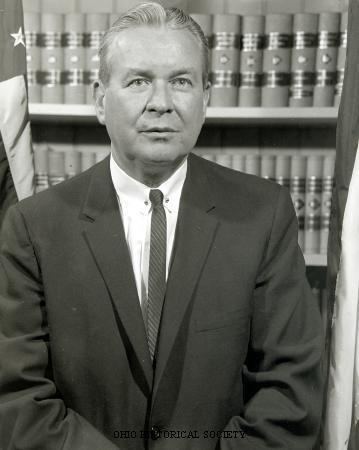Preceded by John J. Gilligan Succeeded by John J. Gilligan | Succeeded by Richard F. Celeste Name Jim Rhodes | |
 | ||
Lieutenant Richard F. Celeste (1975–1979)George Voinovich (1979) | ||
Juank tocando born to be wild con jim rhodes ibiza 2010
James Allen Rhodes (September 13, 1909 – March 4, 2001) was an American Republican politician from Ohio, and as of 2006 one of only six US state governors to serve 4 four-year terms in office. (The other five were Edwin Edwards, George Wallace, Jim Hunt, Bill Janklow, and Terry Branstad.) Rhodes is tied for the fourth longest gubernatorial tenure in post-Constitutional U.S. history at 5,840 days.
Contents
- Juank tocando born to be wild con jim rhodes ibiza 2010
- Jim rhodes apres ski ibiza oct 2009
- Life and politics
- Literary
- Legacy
- References

As governor in 1970, Rhodes sent National Guard troops onto the Kent State University campus at the request of Kent, Ohio's mayor, after Kent State students burned the ROTC building down on May 2. On May 4, four students were killed and nine others were wounded by the Guard. One victim, Dean Kahler, suffered permanent paralysis.
Jim rhodes apres ski ibiza oct 2009
Life and politics
Rhodes was born in Coalton, Jackson County, Ohio, to James and Susan Howe Rhodes, who were of Welsh descent. Rhodes has commented that the reason he and his family were Republicans was because of the respect his father, a mine superintendent, had for John L. Lewis, a prominent Republican union activist. When Rhodes was nine his father died and the family moved to north Springfield where Rhodes graduated from Springfield High School where he played on the football team. Subsequently, the family moved again, this time to Columbus, because Rhodes earned a modest basketball scholarship to The Ohio State University. Although Rhodes dropped out after his first quarter he is often described as a "student" or "alumnus" of Ohio State. After dropping out of college, Rhodes opened a business called Jim's Place across from the university on North High Street. Jim's Place has been described as a place where one could buy anything, from doughnuts and hamburgers, to stag films, or place bets on numbers games.
In 1934, Rhodes began to use his position as a local businessman to climb up the Columbus political ladder, and became a ward committeeman, a member of the Columbus school board, the city auditor, and eventually the mayor of Columbus (1944–1952). It was during this time that he married Helen Rawlins. Rhodes's time as mayor is primarily marked by two achievements, with the first being his convincing of 67% of Columbus voters to approve the city's first income tax, and the second being his successful use of water gun diplomacy to annex much of the surrounding suburbs to Columbus. As surrounding communities grew or were constructed, they came to require access to waterlines, which was under the sole control of the municipal water system. Rhodes told these communities that if they wanted water, they would have to submit to assimilation into Columbus. As a result of this, Columbus, Ohio, currently has the largest land area of any Ohio city.
With an eye on the governorship, Rhodes was elected State Auditor in 1952, and took office in early 1953. In 1954, Rhodes ran against the popular incumbent, Democratic governor Frank Lausche, and lost by a 54% to 46% margin. In 1962, Rhodes ran again for governor – this time against Democratic incumbent Mike DiSalle. Rhodes's campaign centered on "jobs and progress," and in speeches Rhodes routinely claimed that an increase in jobs would lead to a decrease in everything from crime and divorce, to mental illness. Rhodes also made DiSalle's tax increases, such as the gas tax, a prominent part of his campaign. Rhodes also weathered a minor scandal when Democratic State Chairman alleged that Rhodes diverted and borrowed a total of $54,000 from his campaign funds. During a debate, both Rhodes and DiSalle agreed that this was, "the most vicious campaign [of] the Ohio governorship." On November 6, 1962, Ohioans voted Rhodes into the governorship with 59% of the vote.
Rhodes served two terms as governor, and he also was a "favorite son" Presidential candidate who controlled the Ohio delegation to the Republican National Conventions in 1964 and 1968, before retiring in 1971. He ran for the U.S. Senate in 1970 and narrowly lost, to U.S. Representative Robert Taft, Jr., in the primary election, which was two days after the events at Kent State.
Rhodes oversaw the last two (by electrocution) pre-Furman executions in Ohio, which were both in early 1963, before Ohio resumed executions in 1999.
At a news conference in Kent, Ohio, on Sunday May 3, 1970, the day before the Kent State shootings, he said of campus protesters:
"They're worse than the Brownshirts, and the Communist element, and also the Night Riders, and the vigilantes. They're the worst type of people that we harbor in America."
Since the Ohio Constitution limits the governor to two four-year terms, when Rhodes initially filed to run again in 1974, his petitions were refused by the Secretary of State. Rhodes sued, and the Ohio Supreme Court ruled that the limitation was on consecutive terms, thus freeing him to return to office by narrowly defeating incumbent John Gilligan in an upset in the 1974 election. He served two more terms before retiring again in 1983. During the energy crisis of the winter of 1976–77, Rhodes led a 15-minute service, in which he "beseech[ed] God to relieve the storm." The next year, January 1978, amid a blizzard which dropped 31 inches of snow onto Ohio and killed 60 people in the Northeast, Rhodes called the storm "the greatest disaster in Ohio history."
Rhodes sought to run for the governorship again in 1986, seeking a record-breaking fifth term, but soundly lost to the incumbent Dick Celeste, whom Rhodes had narrowly defeated in his last successful gubernatorial bid in 1978.
Rhodes died in Columbus on March 4, 2001, and is interred at Green Lawn Cemetery, Columbus, Ohio.
Literary
Rhodes co-authored stories of historical fiction with Dean Jauchius, including The Trial of Mary Todd Lincoln, The Court-Martial of Commodore Perry and Johnny Shiloh, a novel of the Civil War. The last was adapted to a 1963 television movie by Walt Disney, also called Johnny Shiloh, for which Rhodes received writers credit.
Legacy
Numerous buildings and sites around the state have been named in Rhodes's honor, including:
